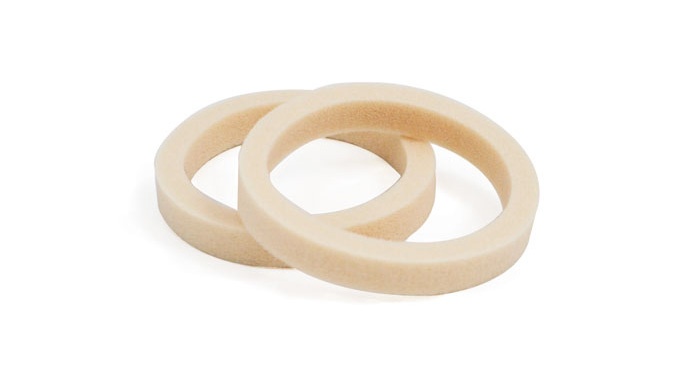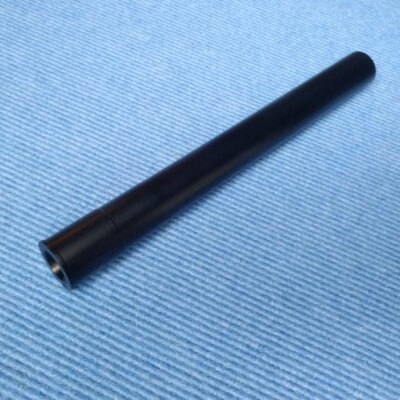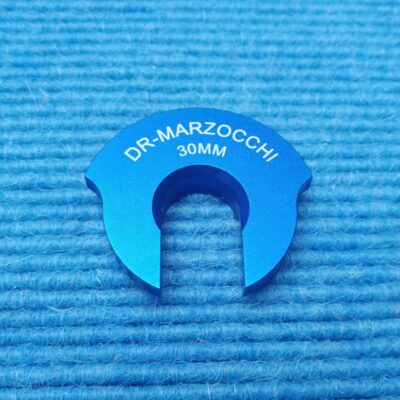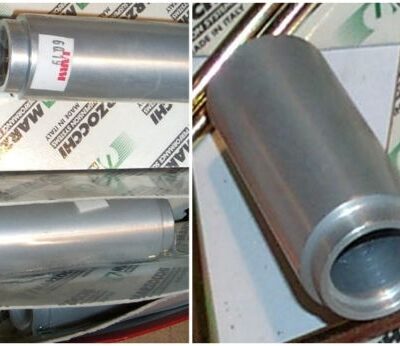That’s title meaning is my personal opinion especialy for all the older (Marzocchi) forks with open oil bath. I have opened about 1.000’s of forks in more than 20 years and I don’t see any advantage. I believe it is a cool marketing gag, like the ones having a special lube or grease for almost e-v-e-r-y-t-h-i-n-g 😉 It’s like having hair shampoo for every year, wheather, age, cothes colour, water conditions etc. Just make the user thing they urgently need it and you can sell 100.000’s of this useless little things! 😏🤷♂️
My personal advice to keep your bike, chain and stanchions clean and functional after bike tours, especialy biking in mud and rain :
- take your garden hose and clean the bike carefully with low preassure
- use a little compressed air from distance to move water away – do not blast direct into sels, bushings bike parts
- use a soft oily towel to clean the stanchions, move your fork up and down, use the towel again
- from time to time use some chain oil to re-oil it to make it work smooth
As this is my personal opinion I’d like to share this remarcable article created and posted online by RWC in 2018. You propaply know RWC as a aftermarket seal seller for Front Suspension Enduro Classic Fork Seals and Rear Shock Needle Bearing Kits. Their business is mass sellings in lower price segment for almost any forks.
I can tell you : I don’t like the Enduro Classic Fork Seals for some reasons (if you search the net you will find it) and believe, that the original dust- & oil seals and it’s reproductions with it’s special design are better in function and quality (spoken especialy for Marzocchi). As long as no original or remastered seals are available RWC’s seals are very helpful as alternative ones and keep forks running.
Anyway : apart from esoteric discussion that’s more a question of marketing and ‘sponsoring’ Google ADS 🙄😏.
Here is a 1:1 copy of the article, read it yourself or use the link to the original article at the end of this page and make your own dicision :
MORE THAN YOU EVER WANTED TO KNOW ABOUT FOAM RINGS (by RWC) 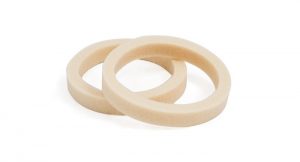 Why blog about foam rings? Well, because we’ve run across some sketchy “foam rings” in our time. We’ve also come across some pretty interesting service instructions that gave out some rather silly directions. Finally, because we’ve been asked to make our special “foam-felt” oil rings available separately, which we’ve just done.
Why blog about foam rings? Well, because we’ve run across some sketchy “foam rings” in our time. We’ve also come across some pretty interesting service instructions that gave out some rather silly directions. Finally, because we’ve been asked to make our special “foam-felt” oil rings available separately, which we’ve just done.
Let’s start with a question we frequently get asked: Are foam rings necessary? The simple answer is “no.” The purpose of foam rings is to retain some oil in the seal head at all times. If your bike has been sitting in the garage overnight and you go to take ride, the splash-bath lube for the bushings and seals has settled in the bottom of your fork legs. Theoretically, the foam rings are still saturated with oil, so as you begin riding, you are not starting out with dry seals and bushings. Theoretically. When you finished your last ride and put your bike away in the garage, the oil saturated foam rings started to let go of any excess oil as gravity began to work on them. If they are good quality, they are still full of oil. But foam rings don’t produce oil–they just store it. Unless they are compressed somehow, no extra oil is going to be expelled onto your bushings and seals when you start riding. Whether you have foam rings or not, TIP YOUR BIKE BACK ON ITS BACK WHEEL SO THE OIL IN THE LOWER LEGS OF THE FORK RUNS UP TO THE BUSHINGS AND SEALS RIGHT BEFORE YOU START RIDING.
So, do foam rings do any good at all? Yes. If you are not going to pre-lube the bushings and seals by physically inclining the front fork, the foam rings will result in SOME oil being present near the seals. It’s marginal insurance, but it may help. Here is the biggest benefit to foam rings in our opinion: They can help more oil to stay in the bushing area for a longer period of time while you are riding. Good, thirsty foam/felt oil rings are always trying to absorb more oil than they can hold. As an already saturated oil ring is splashed with more oil, it tries to capture it, causing the oil to be momentarily kept from running down the inside of the fork leg.
So, what about those “sketchy” foam rings we mentioned? The first extreme is foam rings that are a light foam rubber that is so flimsy they are likely to disintegrate before your next oil service. You would be much better off without foam rings than to have debris from broken down rings in your oil. The second extreme is the super robust oil ring that is likely to outlast the apocalypse but DOESN’T ACTUALLY ABSORB ANY OIL. Not only will a non-absorbent oil ring not to any good–it may actually do harm by blocking oil from getting to the underside of the oil seal. Our proprietary foam-felt oil rings are the perfect blend of strong and absorbent.
About those “silly directions” previously mentioned… Don’t ever pre-lube the oil rings with anything other than what you will be running in the lower legs. We’ve seen numerous post suggesting that this or that special lube used in the foam rings will yield superior performance. That’s hogwash. On your very first ride your “super lube” will get washed out of the foam rings by whatever splash bath oil you are using in the lower legs. The combo of the two lubes might not even get along with each other.
One more bit of advice: DON’T install the foam rings dry. Some forks use a ridiculously small amount of splash bath lube–such as 5cc, for example. A good oil ring will suck up that much oil in a heartbeat and you will be running your fork dry. Always pre-soak the oil rings with whatever lube you will be using in the lower leg and then add the recommended amount of splash bath lube in addition to whatever is in the foam ring.
Reference :
- MORE THAN YOU EVER WANTED TO KNOW ABOUT FOAM RINGS ; text and picture by RWC

